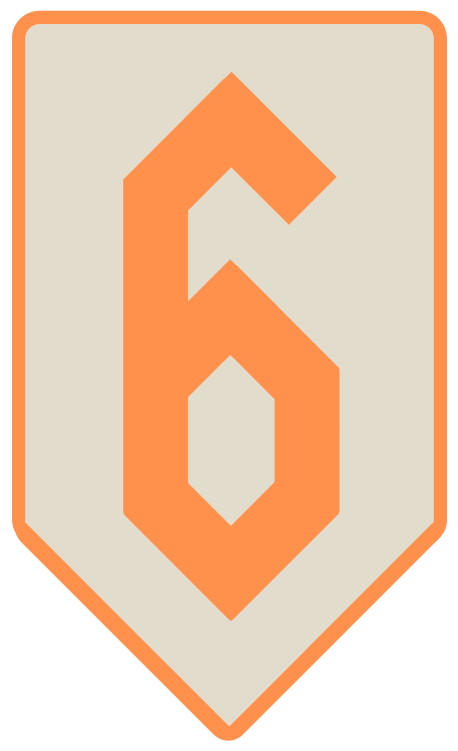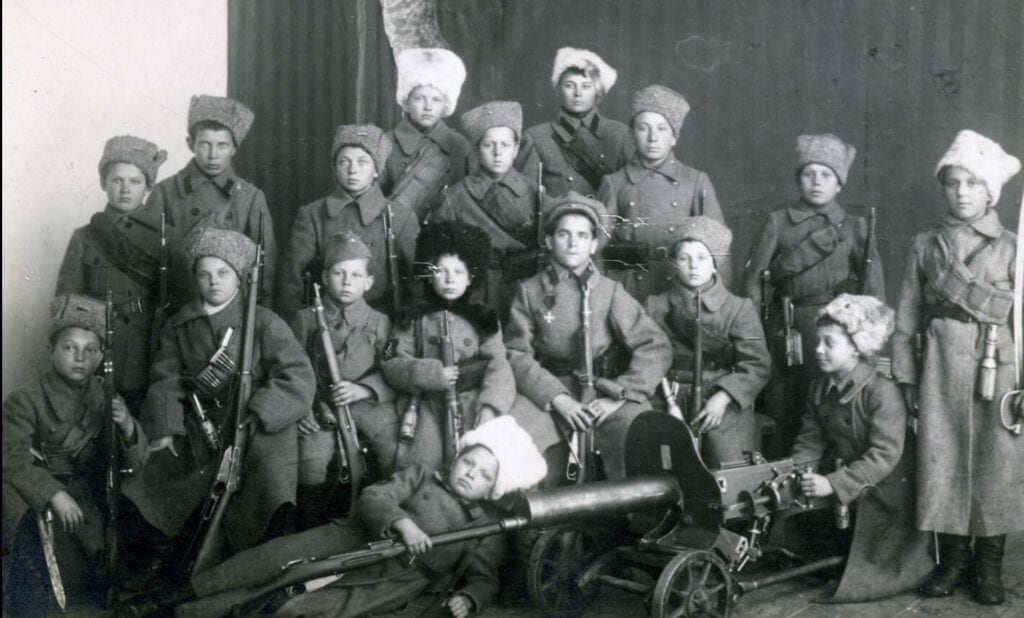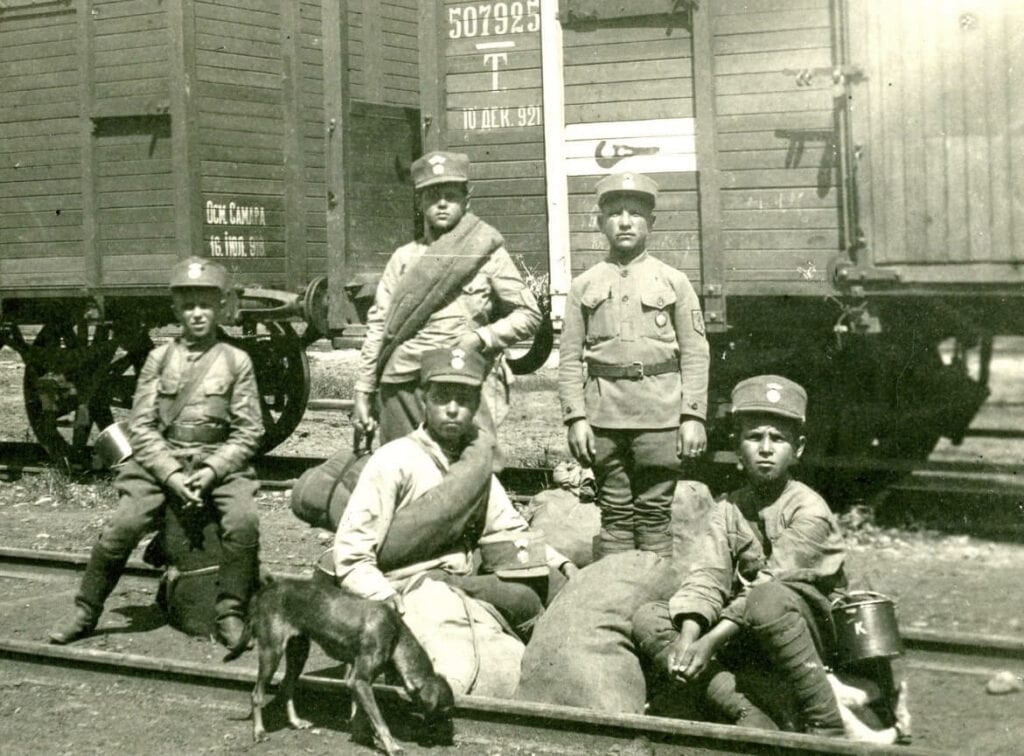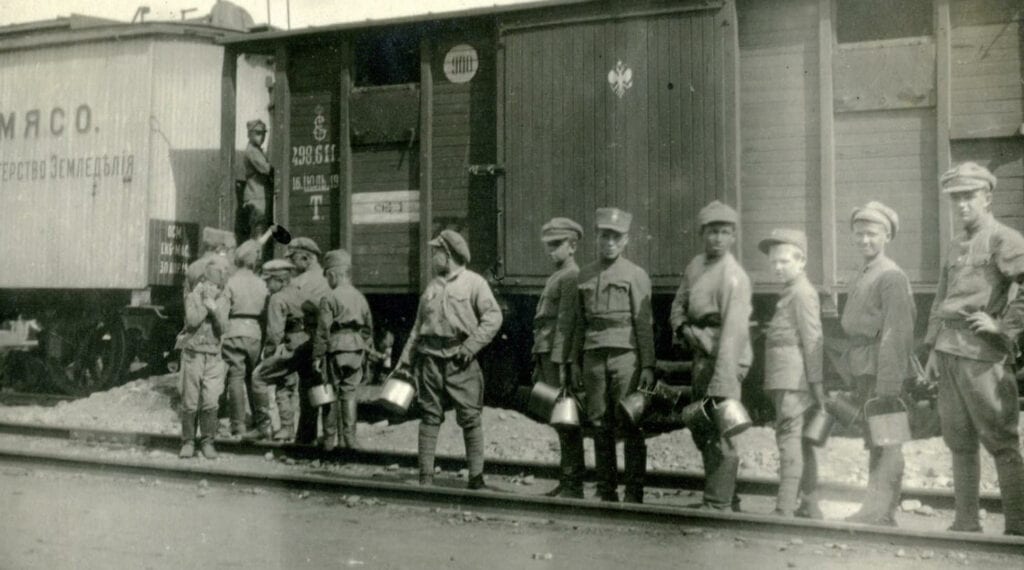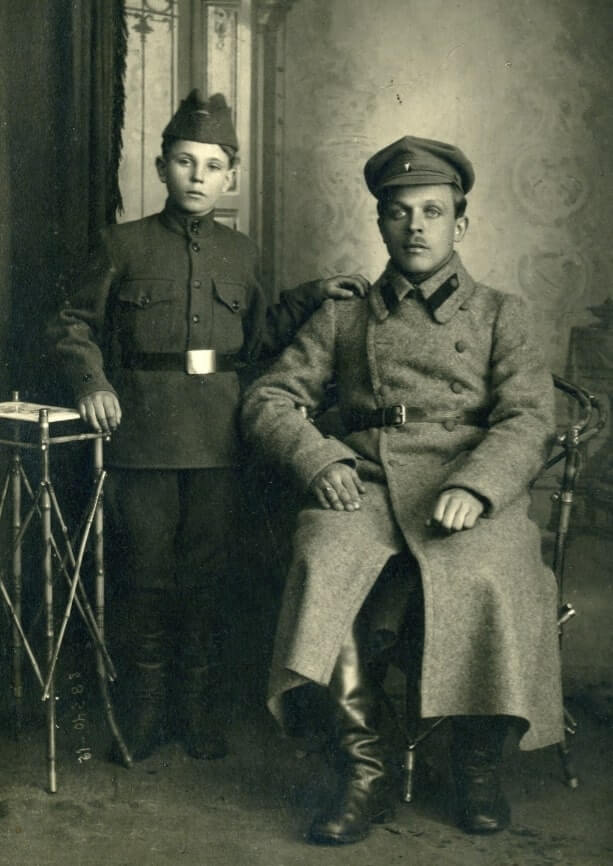Czechoslovak Legions rescue war orphans in Russia
One hundred years ago in Russia, towards the end of the war, the country was shattered by the Bolshevik Revolution. After the peace of Brest-Litovsk, the Russians were not allowed to tolerate the legionnaires on their territory, and the Czechoslovak soldiers were still under attack by German troops, so they had to leave.
The retreat of the legionaries was greatly aided by trains. In these they crossed the whole of Asia along the Trans-Siberian Railway to the Pacific port of Vladivostok.
Starving orphans flocked to these legionary trains. Their parents were either dead or missing. They found that the legionnaires would give them food.
Sometimes it happened that before the line was free, trains were standing at one station for two or three weeks. When the same children showed up for several days and their families could not be traced, the legionnaires took them in.
Several rescued children were thus travelling in different Legion trains in different parts of the main line.
So it made sense to the soldiers to bring the children together in one big group. Thus, Tatars, Ukrainians, Russians or even children of Volhynian Czechs were gathered in one train set. In total, about ten nationalities.
Our legionnaires were substitute parents for these children. They cared for them, educated them. In July 1919, they also established a school for underage volunteers. It functioned similarly to the Czech municipal schools. At the beginning of its existence it was located in Irkutsk and was under the inspectorate of the Czechoslovak troops.
When the legions started on their way again, they continued their education in wagons. The number of orphans grew until finally there were 105. The youngest were about eight, and the oldest were already eighteen.
Gradually, these children also got to know how it works in the army. They lived constantly among the legionnaires who, for example, changed their clothes into military coats or uniforms because they had nothing else.
Several boys also volunteered for combat actions, for which some were awarded decorations for bravery.
Nobody forced them to do it. They acted as a liaison between units when they wanted to. They wore civilian clothes so they wouldn't be so conspicuous, and if the enemy caught them, all they had to do was claim they were lost.
After the end of the war and after returning back to the nascent Czechoslovakia, the orphans found a place in České Budějovice. They went to school there for a while. Gradually, however, their paths began to take different directions.
Some were assigned to different families, some continued their studies or joined companies as employees.
OTHER FATES OF CHILDREN
The director of our museum, Milan Žuffo-Kunča, came across this story after the Velvet Revolution.
Because of the communist regime, which tried to suppress the legionary tradition, these orphans tried not to bring up the subject too much. Their stories were also connected with the struggle against the Bolsheviks and they were worried about possible persecution by the communists. Some of them even changed their names. This made them harder to map and contact.
In the 1990s, however, Mr Žuffo-Kunča tracked down some eighty descendants of the children brought here by the legionnaires. You can listen to his story while visiting the exhibition in the Czechoslovak Legions Museum.
There was also an article for Mladou fronta on this topic, available for viewing here.
